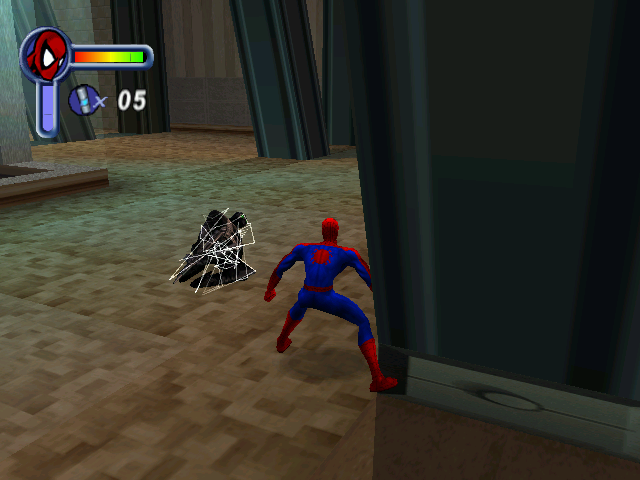

It's just a shame that one of your biggest opponents is the game interface itself.


Where is the rule that prevents developers from fixing interface and gameplay mistakes during ports? It is fun to don Peter Parker's red and blue suit for a while, and the game does do a decent, if somewhat simplistic, job of letting you feel like you're living the life of a superhero. Most disappointingly, some of these complaints, specifically those about the awkward camera angles, have been made since the first PlayStation version was released. Combined, these elements result in plenty of frustrating situations where you're looking right at an enemy for long seconds, but can't seem to line up straight enough for the aiming lock to take effect. Aiming seems partially automated, and player rotation is done in small but incremental moves. It can be used, but will be an irritation throughout the entire game.īe prepared for more than your fair share of accidentally falling off buildings and getting unintentionally stuck on walls. A game controller is recommended, as there's really no way to make keyboard control mapping anything other than awkward. A less appealing legacy of Spider-Man's console origins is the control interface, and the multi-button combos required for some of the more elaborate moves. Whether the linearity is good or bad is largely a question of individual taste, and perhaps age. This linearity is one of the areas where Spider-Man's origins as a console game really show through its ancestors aren't 3D shooters, but rather run the gamut of platform and punch-kick-and-jump games. You're here to kick some bad guy butt and take names. Spider-Man is first and foremost an action game, not a superhero RPG, so the emphasis isn't on puzzle solving or creating an immersive world in which to get lost.

These serve to move the game along quickly, and keep you from getting mired in any overly complicated "find the widget" quests. You're pointed clearly towards each game goal either through the use of Spider-Man's danger-detecting "spider sense," which takes the form of a directional arrow onscreen, or in the form of fairly direct hints.
Spider man 2000 pc full version series#
Scenarios and cut-scenes are linear and directed in nature, and the storyline, such as it is, is revealed in the form of animated sequences between missions and in a series of very appropriate voice-overs by Stan Lee, original creator of the Spider-Man comic book. It's not exactly an ideal situation, though, because like many third-person 3D games, the camera view ranges from cinematic to downright awkward, and there's very little you can do to control it. All of this is made possible by Spider-Man's super strength, agility and amazing webbing powers, which he uses to swing from building to building as well as to trap and pound on his enemies.Ī third-person camera follows the wall-walker through the adventures, giving you a view of him and his somewhat streamlined environment. Throughout the 3D action-adventure, our web-slinging alter ego progresses through the usual series of cartoon scenarios: fighting bad guys, rescuing innocents, and confronting super villains. Spider-Man is true to its roots, both as a console title and as a comic book, and that is both its strongest suit and weakest flaw.
Spider man 2000 pc full version windows#
Activision's Spider-Man, a Windows port of the PlayStation and Nintendo 64 title, gives computer users the chance to do just that, taking on the role of Marvel Comic's arachnid avenger. Who wouldn't want to be a superhero for a day, zooming through the skies, protecting the innocent city below from criminals and evildoers? It's a dream of every kid, big and small.


 0 kommentar(er)
0 kommentar(er)
